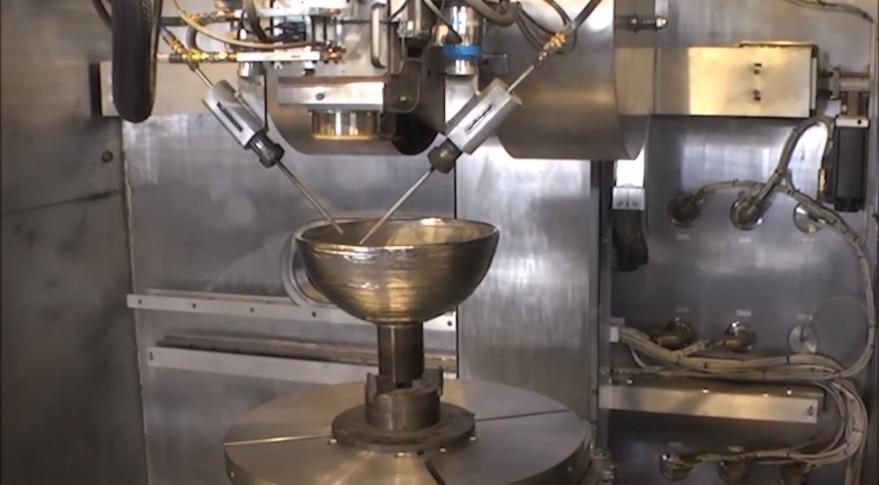
Mike Hamel, vice president and general manager for Lockheed Martin, says that may well change if the additive manufacturing methods the company is testing are satisfactory.
“We may switch to additive manufacturing later,” Hamel says.
Much of the effort behind moving toward AM techniques at Lockheed Martin is the work of Rick Ambrose, the company’s executive vice president for space systems. Ambrose says it’s become critical to reduce the lead times for building satellites, and he says 3D printing holds the keys to reaching that goal.
The $4 million 3D printing machine Lockheed bought last year from Sciaky Inc. is capable of turning out fuel tanks of nearly 150 centimeters in diameter and the method can cut the cost of manufacturing propellent tanks by as much as half.
The process is also much speedier than casting those tanks in molds. When the lead time of the casting technique is included–around 20 months–and the time spent procuring the bulk, forged
“Manufacturers, for the first time, will be able to utilize Sciaky’s revolutionary additive manufacturing technology to produce production parts and prototypes in their own facility. The possibilities are endless,” says Mike Riesen, the general manager of Sciaky.
Material costs can be cut in relation to structural titanium parts that are machined from a billet or forged. Riesen adds that the process can also time spent machining parts by as much as 80%. According to Dennis Little, Lockheed’s vice president of production for space systems, those manufacturing advantages mean 3D printed titanium tanks will be in use on spacecraft before the decade is out if an internal evaluation of the process meets certification criteria from NASA and the Air Force.
Little also says similar tanks will be in use on commercial, military, and civil satellites “within the next couple of years.”
Do you know of any aerospace manufacturers already using additive processes to build their products? Let us know in the Lockheed Martin forum thread on 3DPB.com.
